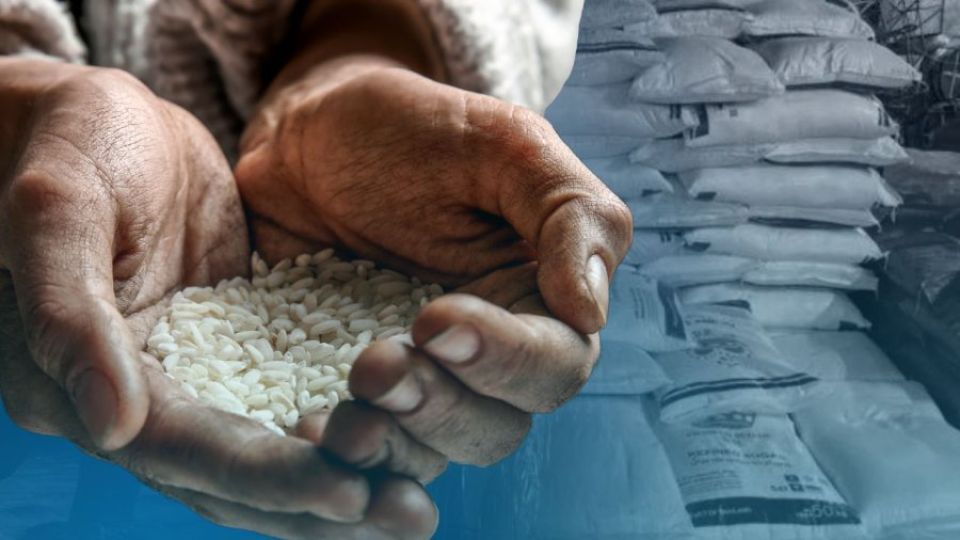August 8, 2023
MANILA – El Niño and the damage left by Typhoon Egay have become a key concern of President Ferdinand “Bongbong” Marcos Jr. who said the Philippines would have to import rice again.
A week later, however, he made clear that “we will only do this if [local] supply is not enough.”
He pointed out that rice production for the third quarter of 2023 is expected to reach 5.47 million metric tons (MT), higher than 4.26 million MT in the previous quarter, which the Philippine Statistics Authority (PSA) estimated based on standing crop last May 1.
Marcos, who also acts as agriculture secretary, said expected local palay output will exceed the demand for the staple which, he said, is 3.79 million MT.
As the DA explained, the estimated rice production by the end of next month or in the first weeks of October will boost the current buffer stock, which is equivalent to 39 days as of last Tuesday (Aug. 1).

GRAPHIC Ed Lustan
But Raul Montemayor, national manager of the Federation of Free Farmers, said with the current buffer stock, “we will need to import 21 days equivalent to fill up the gap until next month, after which the new harvests will start coming in.”
“That means around 700,000 MT need to be imported either by the private sector or the government before the 39-day [buffer] stock runs out. A safer figure is one million MT,” he told INQUIRER.net via FB Messenger.
Help from India?
Last month, as Marcos expressed concern over the possibility of a rice shortage that could lead to a spike in prices, he said he may seek a supply deal from India, which already banned the exportation of non-basmati white rice.

GRAPHIC Ed Lustan
“I think I can make a deal with India. Perhaps we can talk to someone there,” he said.
But as stressed by Sen. Grace Poe, while the Philippines only imported 10,045 MT of the grain from India last year, compared to the 3.6 million MT from Vietnam, the ban could bring prices to a record high all over the world.
She said the Philippines is not excluded from the “collateral impact” of the decision made by India on July 20, pointing out that “the decline in global supply from the biggest rice exporter is expected to cause a spike in global rice prices because of speculation.”
According to Poe, non-basmati white rice accounts for over 80 percent of India’s total rice exports: “This means that in one fell swoop, India has created a 17.86 million MT shortage in the global rice market,” said the senator.
“Those who will fill that gap can certainly charge a premium,” she said.
Poe stressed that Vietnam, which was the source of close to 90 percent of rice brought into the Philippines last year, already increased its price to $600/metric ton from the previous $500/metric ton.
No less than the International Monetary Fund has pointed out that India’s move could accelerate inflation in food prices, like the effect of the suspension of the Black Sea export deal for Ukraine’s grain.
As reported by CNBC based on an analysis by Barclays, a universal bank based in London, the “Philippines would be the ‘most exposed to a rise in global rice prices,’ given how the weighting of rice is highest in the country’s CPI basket”. CPI refers to consumer price index.
Filipinos, Poe said, consume 118.81 kilos or two sacks of rice each on the average a year.
Import-dependent
Despite Marcos’ statement, though, that the Philippines will only import rice if local supply is not enough, the DA had said they will proceed with the schedule for the importation of 1.3 million MT of the grain.

GRAPHIC Ed Lustan
This, as it stated that “we have already something like 1.3 million metric tons volume of applications that are already pending there,” pointing out that its process in giving out “sanitary and phytosanitary permits” takes time, too.
Rep. Arlene Brosas (Gabriela), however, asked Marcos to “veer away from his proposed government-to-government importation of rice and instead focus on strengthening our local rice industry.”
According to data from DA’s Bureau of Plant Industry, the Philippines imported 2.77 million MT in 2021, 3.8 million MT in 2022, and 1.3 million MT in May since the start of the year.
Next year, the US Department of Agriculture said, the Philippines is expected to import more grain, especially in light of the projected increase in demand, saying that the level could reach 3.8 million MT in 2024.
As pointed out by DA spokesperson Rex Estoperez, under the Rice Tariffication Act (RTA), which was signed into law in 2019, only the President has the authority to call for the importation of rice in case of emergency.
The RTA, which then President Rodrigo Duterte signed into law in 2019, reduced the National Food Authority’s (NFA) role to one that maintains a 15 to 30 days buffer stock of rice from palay bought from local producers.
Looking back, the law, which is being opposed by farmers, replaced quantitative, or volume, restrictions on imported rice with tariffs of 35 to 40 percent, and reduced the role of the NFA from main buyer to one that maintains a 15 to 30 days buffer stock of rice.
According to data from the DA, with the projected palay output of 5.47 million MT in the third quarter of 2023 and demand expected to reach 3.79 million MT, ending stock is seen at 1.69 million MT, which is enough to last 45 days at current levels of consumption.
However, Albay Rep. Joey Salceda stressed in April that 45 days is lower than the ideal 90 days.


